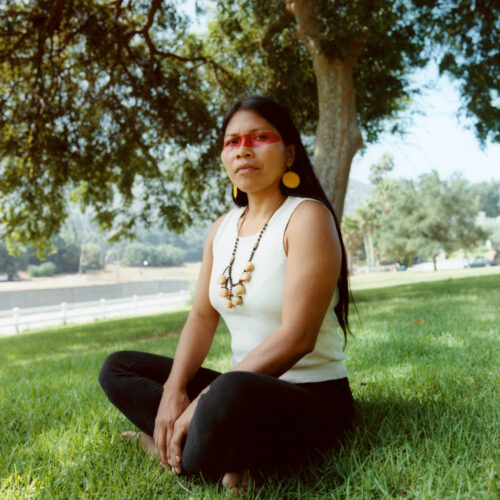Favorite Spots in the City
DESIGN I love Concepción; it’s a brand new design space that opened in the pandemic run by the founders of RIES design studio. As well as displaying their own work, they have carefully curated a selection of beautiful decorative and functional pieces by emerging young designers. It’s housed in a converted warehouse space which they worked on during lockdown. They stock hecho hecho’s porcelain designs and Luna Oks’s beautiful hand-printed fabrics, two designers I love.FOOD To eat, I’m a big fan of El Preferido, a converted old-school bodegón opened in 1952 by Asturians which was given a facelift and now serves contemporary Argentinian fare. The organic tomate al medio and milanesa for two with fries or mash is a must.View this post on Instagram
SHOPPING Matías Carbone’s new menswear label CARBONE incorporates artisanal techniques. He works with skilled craftsmen in various Argentinian provinces to produce heirloom pieces with a contemporary twist, such as woven waistcoats and tunics. Other timeless pieces include his tailored trenches, shirts, and trousers. In addition, he runs a showroom of his collection from his flat in Buenos Aires.View this post on Instagram
View this post on Instagram
Lastly, Here are Five Reflections on Buenos Aires
- You need a PhD in finance to get Argentina’s economy. Porteños are obsessed with talking about money, but phobic about discussing how much they earn. This doesn’t help improve gender inequality or bettering salaries.
- Road markings are symbolic, and the Porteño idiosyncrasy is personified behind the wheel. They either act like maniacs or wannabe Formula-1 drivers.
- My best friends are Argentinian. Once you’ve earned their trust they’ll go out of their way to help and be there for you, and when the chips are down they’ll keep you company, cook for you, always eager to do you favors and make you feel at home.
- You no longer starve if you’re vegetarian. In the 12 years I’ve lived here there’s been a huge shift in local eating habits. These days you’re more likely to stumble across a new plant-based opening or organic market than a new parrilla.
- The best time to visit is in November. Spring has sprung and BA’s central avenues and parks pop with the jacaranda trees’ vibrant purple blossom.









